|
Medals have been presented to event winners and
runners-up since the first modern Olympic Games in 1896. For each host
city, different medals are minted and the designs and sizes have changed
through time. Details of the medals below.
|
|
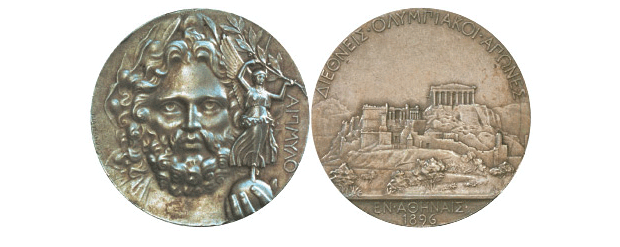 |
|
Winners at the first modern Olympics did not receive
a gold medal but a silver one. Runners-up had copper. On the front Zeus,
father of the Gods, holds Nike, the goddess of victory. The Acropolis is
shown on the back.
|
|
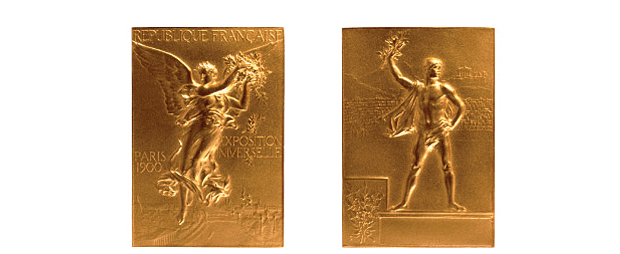 |
|
Gold, silver and bronze medals for the first time,
and the only rectangular design amid the discs. Nike is on the front, a
victorious athlete on the back.
|
|
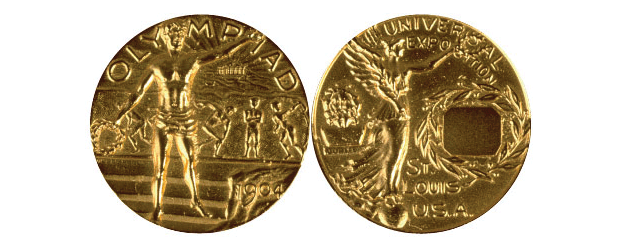 |
|
These feature an athlete holding the victory symbol
of a laurel crown, in front of a relief which shows the ancient Olympic
disciplines. Nike is on the other side.
|
|
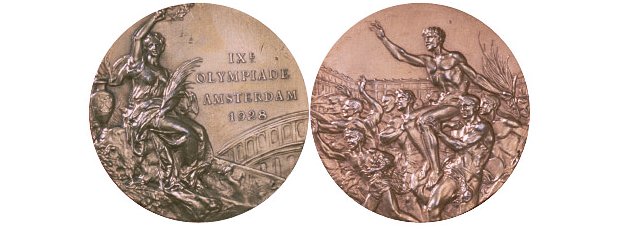 |
|
Florentine sculptor and painter Giuseppe Cassioli
wins an IOC competition to design the medals and from 1928 to 1968, the
basic design remains identical. The front shows victory goddess Nike,
holding a winner's crown and a palm. The back: a winner carried by a
crowd.
|
|
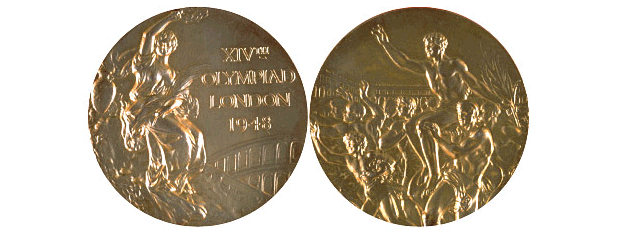 |
|
Florentine sculptor and painter Giuseppe Cassioli won
an IOC competition to design the medals and from 1928 to 1968, the basic
design remains identical. The front shows victory goddess Nike, holding
a winner's crown and a palm. The back: a winner carried by a crowd.
|
|
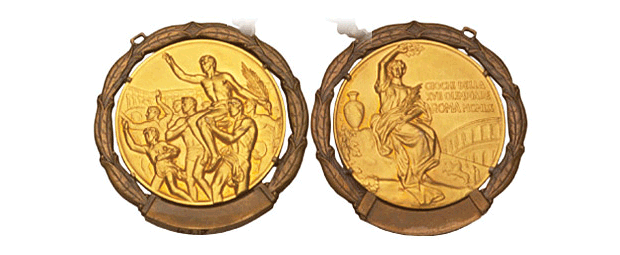 |
|
While the design remains the same, these medals are
set in a bronze "laurel leaf" ring and chain. The front and back designs
are swapped over. |
|
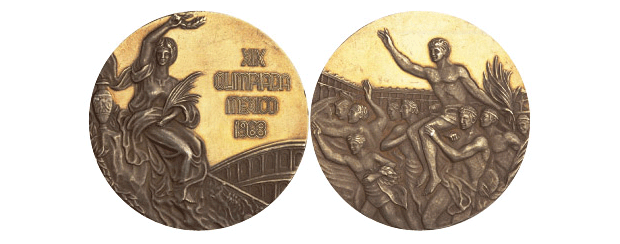
|
|
Florentine sculptor and painter Giuseppe Cassioli won
an IOC competition to design the medals and from 1928 to 1968, the basic
design remains identical. The front shows victory goddess Nike, holding
a winner's crown and a palm. The back: a winner carried by a crowd. |
|
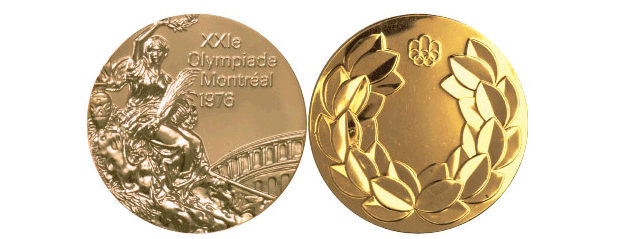
|
|
The trend for a sparse design on the reverse of the
medal continues with a simple laurel crown and the host city's Olympic
emblem. |
|
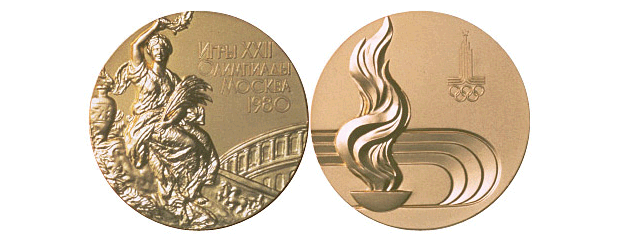
|
|
The idea of featuring the host city logo on the
reverse continues, above a stylised representation of a stadium and
Olympic flame and cauldron.
|
|
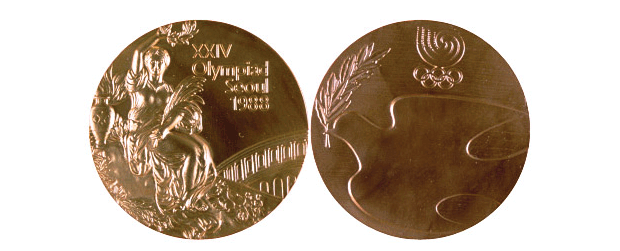 |
|
Modernist again, with a dove carrying a laurel sprig
and the Seoul Olympic logo - an ancient Korean Taegeuk symbol, like that
on the national flag.
|
|
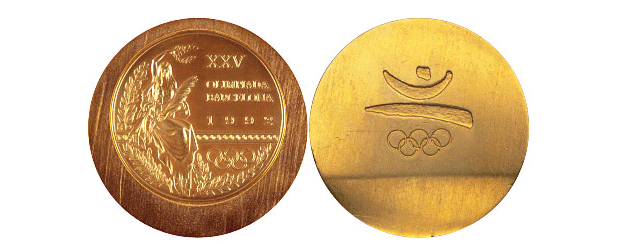 |
|
Spain's most famous living sculptor Xavier Corbero
spruces up the figure of Nike for modern times and puts Barcelona's logo
on the back - a blue head, invoking the Mediterranean sea; yellow,
sunshine, open arms and leaping, red legs.
|
|
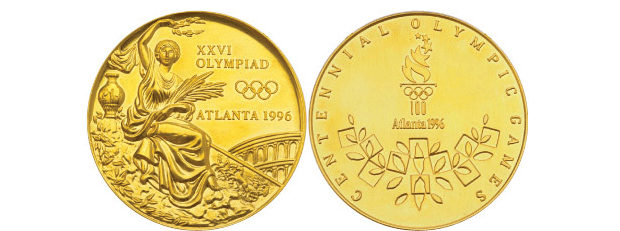 |
|
Back to a conservative Nike design. On the back is
the Atlanta emblem of an Olympic flame and stars and a graphical laurel
branch to mark the modern Olympics centennial year.
|
|
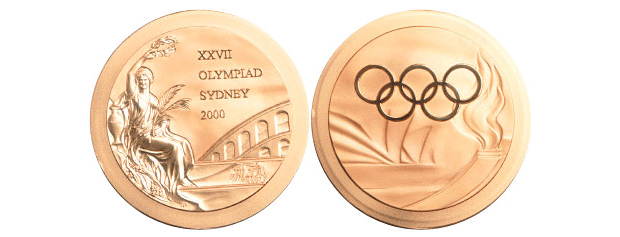 |
|
The design stokes controversy, when critics point out
the long-standing feature on the front of medals was not Greek, but a
Roman coliseum. Australian coin designer Wojciech Pietranik put the
Sydney Opera House and the Olympic torch on the reverse.
|
|
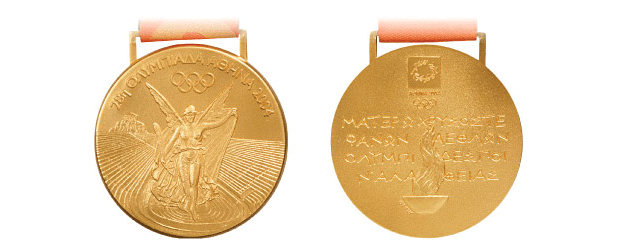 |
|
The Greeks went Greek, with a new depiction of Nike,
flying into the 1896 Panathenaic stadium to bestow victory on the
strongest, highest and fastest. Classic Greek lettering spells out the
Olympic ode under the Athens logo.
|
|
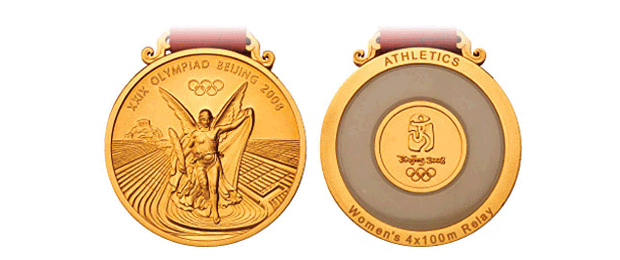 |
|
The Greek goddess and stadium remain on the front.
The coveted Chinese gemstone jade is inlaid into the back of each medal.
|
|
 |
|
The biggest Summer Olympics medals to date. Artist
David Watkins says the key symbols on front and back juxtapose the
goddess Nike, for the spirit and tradition of the Games, and the River
Thames, for the city of London. On the back of the medals is the 2012
branding, representing the modern city as a jewel-like, geological
growth. The logo is shown against a 'pick-up-sticks' grid which radiates
the energy of athletes and a sense of pulling together. The River Thames
runs through the middle as a celebratory ribbon. The bowl-like
background recalls ancient amphitheatres, with a square balancing the
circle to give a sense of place. The sport and discipline is engraved on
the rim of each medal, all of which will be produced by the Royal Mint
at Llantrisant, South Wales. |